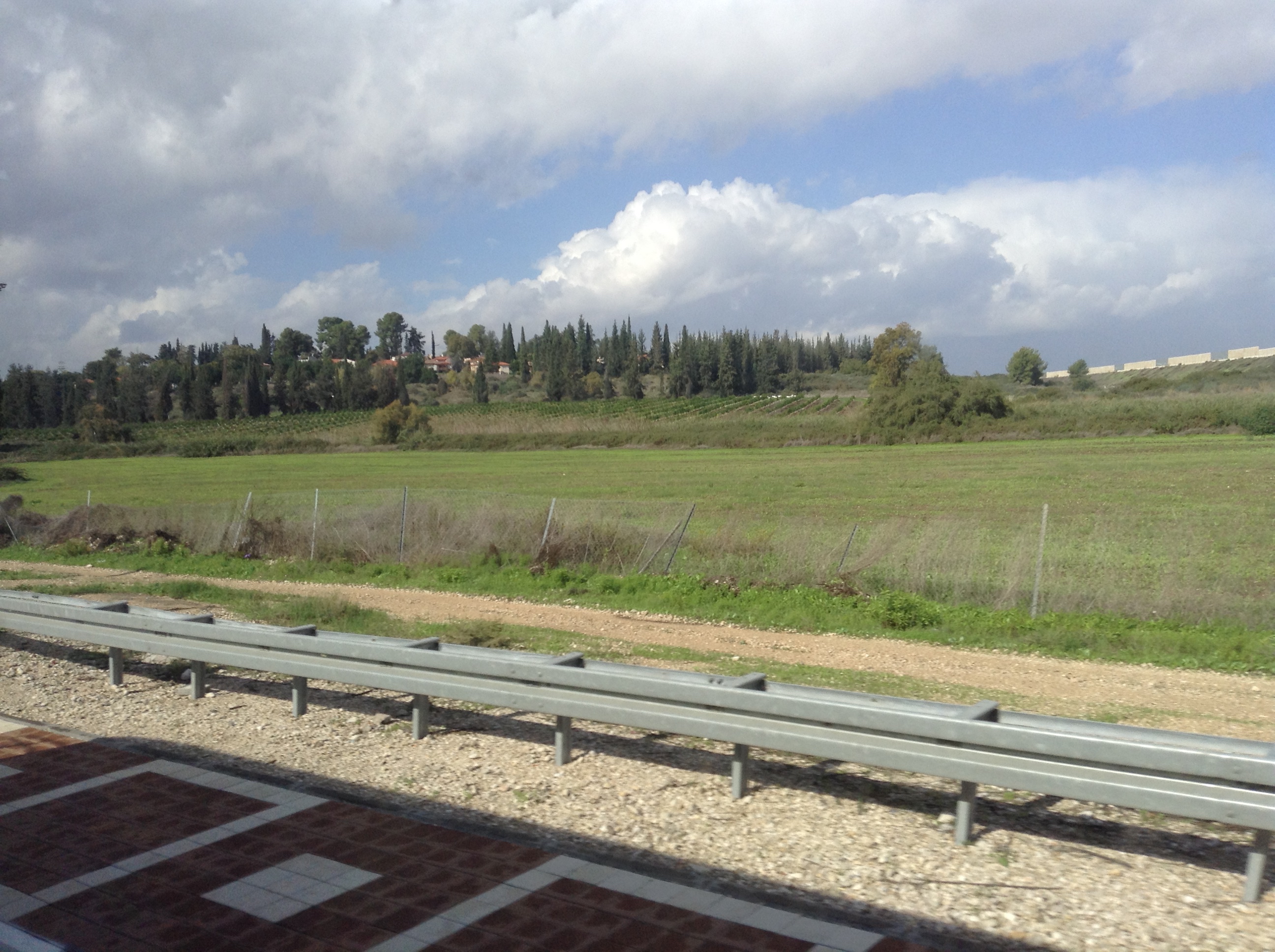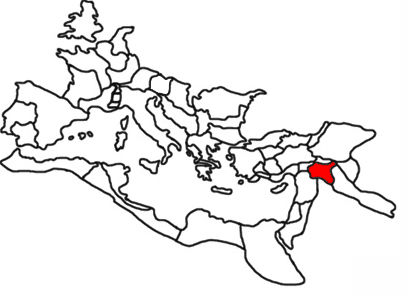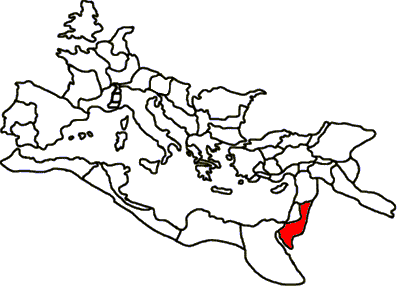|
Metzad Mahmal
Metzad Mahmal is the ruins of a stronghold located on the edge of the northern cliff of the Ramon Crater, at the top end of Ma'ale Mahmal (ū×ūóū£ūö ū×ūŚū×ū£, "Mahmal Ascent") and is part of the Incense Route that runs between Petra and Avdat. Geography Ma'ale Mahmal is the steep section, where the Incense Route overcomes the main natural obstacle in its path, the northern cliff of Ramon Crater. The ascent is a narrow path, about 200 meters long, that goes up to the top of the cliff. This climb is one of the most difficult sections of the Incense Route, as its average width is one meter, and it requires walking in a row of both people and pack animals. Most probably, the fundamental work of clearing the path and adapting it to regular caravan traffic was done by the Romans, who improved the ancient Nabatean route. Site research The site was first surveyed in 1937 by George Kirk, who was also the first to survey Ma'ale Machmel. In 1960, the site was surveyed by Beno Rothenber ... [...More Info...] [...Related Items...] OR: [Wikipedia] [Google] [Baidu] |
Southern District (Israel)
The Southern District (, ''MeßĖźoz HaDarom''; ) is one of Israel's Districts of Israel, six administrative districts, the largest in terms of land area but the most Population density, sparsely populated. It covers most of the Negev desert, as well as the Arabah, Arava valley. The population of the Southern District is 1,086,240 and its area is 14,185 km2. Its population is 79.66% Jewish and 12.72% Arab (mostly Muslim), with 7.62% of other origins. The district capital is Beersheba, while the largest city is Ashdod. Beersheba's dormitory towns of Omer, Israel, Omer, Meitar, and Lehavim are affluent on an Israel scale, while the development towns of Dimona, Sderot, Netivot, Ofakim, and Yeruham and the seven Negev Bedouin, Bedouin cities are lower on the socio-economic scale. [...More Info...] [...Related Items...] OR: [Wikipedia] [Google] [Baidu] |
Mordechai Gichon
Mordechai Gichon (Hebrew: ū×ū©ūōūøūÖ ūÆūÖūŚūĢū¤; born August 16, 1922; died September 19, 2016) was an Israeli non-fiction author and military historian. Early life and military career Gichon was born Mordechai Gicherman in Berlin, Germany, to a Jewish family. In 1934, the family moved to Mandatory Palestine and settled in Tel Aviv, where his father Nachum ran a German-language newspaper. Gichon was educated at the Ben-Yehuda Gymnasium, and later at the Hebrew University of Jerusalem. In 1940, he joined the Haganah, and in 1942, he enlisted in the British Army to fight in World War II. He saw action in Europe with the Jewish Brigade. Following the war, Gichon become one of the Nakam, who hunted down and killed former Nazis, and was among the Jewish Brigade veterans who organized Aliyah Bet, or illegal immigration of Holocaust survivors to Palestine. Gichon was placed in charge of an assembly point in the Netherlands from where Holocaust survivors were sought out and helped in th ... [...More Info...] [...Related Items...] OR: [Wikipedia] [Google] [Baidu] |
Caravanserais In Israel
A caravanserai (or caravansary; ) was an inn that provided lodging for travelers, merchants, and caravans. They were present throughout much of the Islamic world. Depending on the region and period, they were called by a variety of names including ''khan'', ''funduq'' and ''wikala.'' Caravanserais supported the flow of commerce, information, and people across the network of trade routes covering Asia, North Africa and Southeast Europe, most notably the Silk Road. In the countryside, they were typically built at intervals equivalent to a day's journey along important roads, where they served as a kind of staging post. Urban versions of caravanserais were historically common in cities where they could serve as inns, depots, and venues for conducting business. The buildings were most commonly rectangular structures with one protected entrance. Inside, a central courtyard was surrounded by an array of rooms on one or more levels.'''' In addition to lodgings for people, they ofte ... [...More Info...] [...Related Items...] OR: [Wikipedia] [Google] [Baidu] |
Ramat Negev Regional Council
Ramat HaNegev Regional Council () is a regional council in the Negev desert in Israel. With around 8,000 residents spread across 20 villages, the council is geographically the largest in Israel, covering more than 20% of Israel's landmass. The council's headquarters are located on Highway 40 between Mashabei Sadeh and Tlalim. Geography Ramat HaNegev is geographically the largest local authority area in Israel, covering over 4.3 million dunam, around 22% of Israel. The region is home to around 8,000 residents spread across 20 villages split between kibbutzim, moshavim, community settlements, an educational youth village and military bases, as well as 23 farms. The council borders Central Arava Regional Council to the east, Hevel Eilot Regional Council to the south, Egypt to the west and Bnei Shimon Regional Council and Eshkol Regional Council to the north. Neve Midbar Regional Council and the local councils of Mitzpe Ramon and Yeruham are enclaves within Ramat Ha ... [...More Info...] [...Related Items...] OR: [Wikipedia] [Google] [Baidu] |
Ancient Sites In Israel
Ancient history is a time period from the beginning of writing and recorded human history through late antiquity. The span of recorded history is roughly 5,000 years, beginning with the development of Sumerian cuneiform script. Ancient history covers all continents inhabited by humans in the period 3000 BCAD 500, ending with the expansion of Islam in late antiquity. The three-age system periodises ancient history into the Stone Age, the Bronze Age, and the Iron Age, with recorded history generally considered to begin with the Bronze Age. The start and end of the three ages vary between world regions. In many regions the Bronze Age is generally considered to begin a few centuries prior to 3000 BC, while the end of the Iron Age varies from the early first millennium BC in some regions to the late first millennium AD in others. During the time period of ancient history, the world population was exponentially increasing due to the Neolithic Revolution, which was in full prog ... [...More Info...] [...Related Items...] OR: [Wikipedia] [Google] [Baidu] |
National Parks Of Israel
National parks of Israel are declared historic sites or nature reserves, which are mostly operated and maintained by the National Nature and Parks Authority. As of 2015, Israel maintains 81 national parks and more than 400 nature reserves, including in the occupied West Bank, that protect 2,500 species of indigenous wild plants, 32 species of fish, 530 species of birds and 100 species of mammals.Where the GolanŌĆÖs rivers flow into the Sea of Galilee The Times of Israel. Aviva and Shmuel Bar-am. 29/08/15: "As time passed, and with the help of some extraordinary personalities with drive and ambition, the Knesset legislated two official Authorities to deal with our natural heritage: The National Parks Authority and the Nature Reserves Authority. Both began ope ... [...More Info...] [...Related Items...] OR: [Wikipedia] [Google] [Baidu] |
World Heritage Sites In Israel
The United Nations Educational, Scientific and Cultural Organization (UNESCO) World Heritage Sites are places of importance to cultural or natural heritage as described in the UNESCO World Heritage Convention, established in 1972. Cultural heritage consists of monuments (such as architectural works, monumental sculptures, or inscriptions), groups of buildings, and sites (including archaeological sites). Natural heritage is defined as physical and biological formations, geological and physiographical formations (including habitats of threatened flora and fauna), and sites which are important from the point of view of scientific research, conservation or natural aesthetic. The State of Israel ratified the convention on 6 October 1999, making its cultural and natural sites eligible for inclusion on the list. The country has nine sites, all of which are cultural. The earliest inclusions were Masda and the Old City of Acre in 2001; the latest inclusion was the network of caves at Beit ... [...More Info...] [...Related Items...] OR: [Wikipedia] [Google] [Baidu] |
Nabataean Architecture
Nabatean architecture (Arabic: ž¦┘Ä┘ä┘Æž╣┘É┘ģ┘Äž¦ž▒┘Äž®┘Å ž¦┘ä┘å┘Ä┘æž©┘ÄžĘ┘É┘Ŗ┘Ä┘æž®┘Å; al-╩┐imarah al-nabatiyyah) refers to the building traditions of the Nabateans ( /╦īn├”b╔Ö╦łti╦É╔Önz/; Nabataean Aramaic: ÉóĢÉóāÉóŗÉół ''Nab─üß╣Ł┼½''; Arabic: ┘▒┘ä┘ÆžŻ┘Ä┘å┘Æž©┘Äž¦žĘ ''al-╩ŠAnb─üß╣Ł''; compare Akkadian: ÆłŠÆüĆÆīģ ''Nab─ütu''; Ancient Greek: ╬Ø╬▒╬▓╬▒Žä╬▒ß┐¢╬┐Žé; Latin: ''Nabataeus''), an ancient Arab people who inhabited northern Arabia and the southern Levant. Their settlementsŌĆömost prominently the assumed capital city of Raqmu (present-day Petra, Jordan)ŌĆögave the name ''Nabatene'' (Ancient Greek: ╬Ø╬▒╬▓╬▒Žä╬Ę╬Į╬«, ''Nabat─ōnßĖŚ'') to the Arabian borderland that stretched from the Euphrates to the Red Sea. Their architectural style is notable for its temples and tombs, most famously the ones found in Petra. The style appears to be a mix of Mesopotamian, Phoenician, Hellenistic, and South Arabian influences modified to suit the Arab architectural taste. Petra, the ca ... [...More Info...] [...Related Items...] OR: [Wikipedia] [Google] [Baidu] |
Nabataean Sites In Israel
The Nabataeans or Nabateans (; Nabataean Aramaic: , , vocalized as ) were an ancient Arab people who inhabited northern Arabia and the southern Levant. Their settlementsŌĆömost prominently the assumed capital city of Raqmu (present-day Petra, Jordan)ŌĆögave the name ''Nabatene'' () to the Arabian borderland that stretched from the Euphrates to the Red Sea. The Nabateans emerged as a distinct civilization and political entity between the 4th and 2nd centuries BC, with their kingdom centered around a loosely controlled trading network that brought considerable wealth and influence across the ancient world. Described as fiercely independent by contemporary Greco-Roman accounts, the Nabataeans were annexed into the Roman Empire by Emperor Trajan in 106 AD. Nabataeans' individual culture, easily identified by their characteristic finely potted painted ceramics, was adopted into the larger Greco-Roman culture. They converted to Christianity during the Byzantine period. They ha ... [...More Info...] [...Related Items...] OR: [Wikipedia] [Google] [Baidu] |
Israel Nature And Parks Authority
The Israel Nature and Parks Authority (, ; ) is an Israeli government organization that manages nature reserves and national parks in Israel, the Golan Heights and parts of the West Bank. The organization was founded in April 1998, merging two organizations (The National Parks Authority and the Nature Reserves Authority) that had managed the nature reserves and national parks separately since 1964. The director of the Authority is Raya Shurki. The symbol of the Israel Nature and Parks Authority is the ibex, a mountain goat similar to the antelope. One of the missions of the Israel Nature and Parks Authority is enforcing Israeli wildlife protection laws. Regions As of 2015, the Israel Nature and Parks Authority was the overseer of 400 nature reserves and 81 national parks, covering over 20 percent of IsraelŌĆÖs land mass. [...More Info...] [...Related Items...] OR: [Wikipedia] [Google] [Baidu] |
Gallienus
Publius Licinius Egnatius Gallienus (; ŌĆō September 268) was Roman emperor with his father Valerian from 253 to 260 and alone from 260 to 268. He ruled during the Crisis of the Third Century that nearly caused the collapse of the empire. He won numerous military victories against usurpers and Germanic tribes, but was unable to prevent the secession of important provinces. His 15-year reign was the longest in half a century. Born into a wealthy and traditional senatorial family, Gallienus was the son of Valerian and Mariniana. Valerian became Emperor in September 253 and had the Roman Senate elevate Gallienus to the rank of ''Augustus''. Valerian divided the empire between him and his son, with Valerian ruling the east and his son the west. Gallienus defeated the usurper Ingenuus in 258 and destroyed an Alemanni army at Mediolanum in 259. The defeat and capture of Valerian at Edessa in 260 by the Sasanian Empire threw the Roman Empire into the chaos of civil war. Contr ... [...More Info...] [...Related Items...] OR: [Wikipedia] [Google] [Baidu] |
Nabatean
The Nabataeans or Nabateans (; Nabataean Aramaic: , , vocalized as ) were an ancient Arab people who inhabited northern Arabia and the southern Levant. Their settlementsŌĆömost prominently the assumed capital city of Raqmu (present-day Petra, Jordan)ŌĆögave the name ''Nabatene'' () to the Arabian borderland that stretched from the Euphrates to the Red Sea. The Nabateans emerged as a distinct civilization and political entity between the 4th and 2nd centuries BC, with their kingdom centered around a loosely controlled trading network that brought considerable wealth and influence across the ancient world. Described as fiercely independent by contemporary Greco-Roman accounts, the Nabataeans were annexed into the Roman Empire by Emperor Trajan in 106 AD. Nabataeans' individual culture, easily identified by their characteristic finely potted painted ceramics, was adopted into the larger Greco-Roman culture. They converted to Christianity during the Byzantine period. They ha ... [...More Info...] [...Related Items...] OR: [Wikipedia] [Google] [Baidu] |







